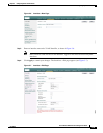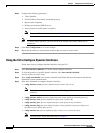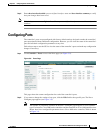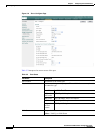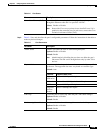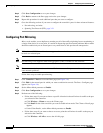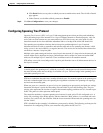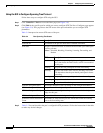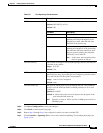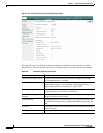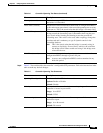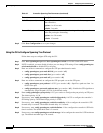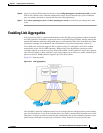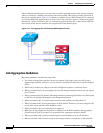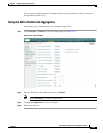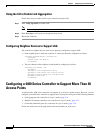
3-23
Cisco Wireless LAN Controller Configuration Guide
OL-8335-02
Chapter 3 Configuring Ports and Interfaces
Configuring Ports
Step 4 Click Save Configuration to save your changes.
Step 5 Click Back to return to the Ports page.
Step 6 Repeat Step 2 through Step 5 for each port for which you want to enable STP.
Step 7 Click Controller > Spanning Tree to access the Controller Spanning Tree Configuration page (see
Figure 3-10).
Table 3-5 Port Spanning Tree Parameters
Parameter Description
STP Mode The STP administrative mode associated with this port.
Options:Off, 802.1D, or Fast
Default: Off
STP Mode Description
Off Disables STP for this port.
802.1D Enables this port to participate in the
spanning tree and go through all of the
spanning tree states when the link state
transitions from down to up.
Fast Enables this port to participate in the
spanning tree and puts it in the forwarding
state when the link state transitions from
down to up more quickly than when the
STP mode is set to 802.1D.
Note In this state, the forwarding delay
timer is ignored on link up.
STP Port Priority The location of the port in the network topology and how well the port
is located to pass traffic.
Range: 0 to 255
Default: 128
STP Port Path Cost Mode Determines whether the STP port path cost is set automatically or
specified by the user. If you choose User Configured, you also need to
set a value for the STP Port Path Cost parameter.
Range: Auto or User Configured
Default: Auto
STP Port Path Cost The speed at which traffic is passed through the port. This parameter
must be set if the STP Port Path Cost Mode parameter is set to User
Configured.
Options:0 to 65535
Default: 0, which causes the cost to be adjusted for the speed of the
port when the link comes up.
Note Typically, a value of 100 is used for 10-Mbps ports and 19 for
100-Mbps ports.



